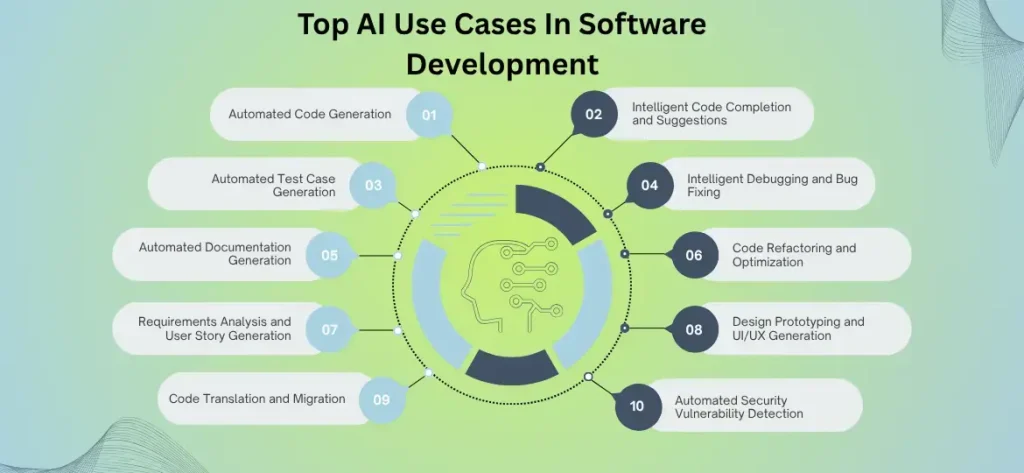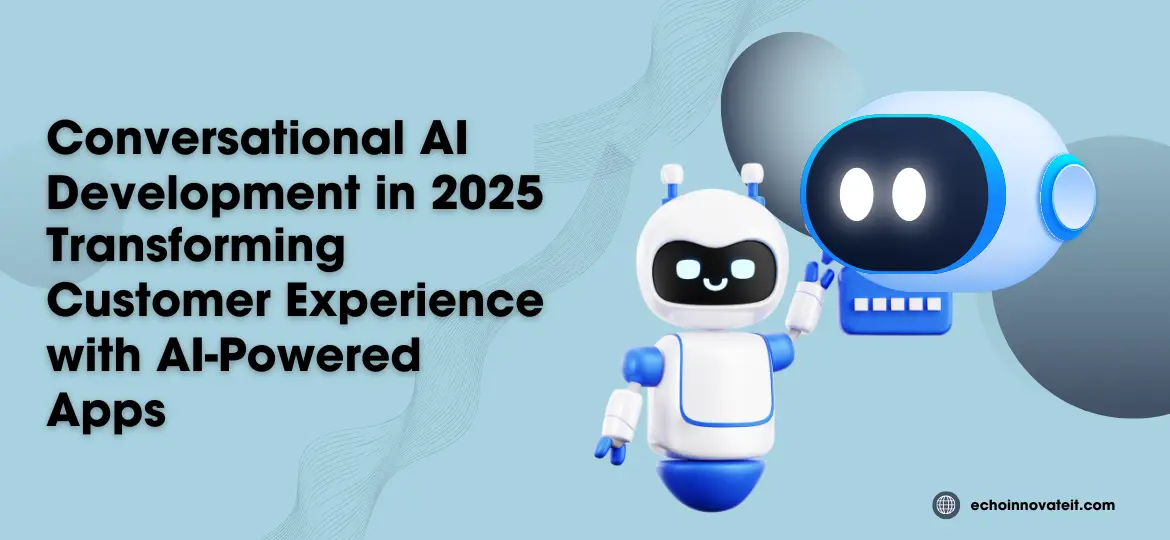Technology is rapidly advancing at a fantastic rate, and one notable sign is Generative AI’s fast rise. This exceptional artificial Intelligence creates fresh content every day with stories, pictures, and scientific breakthroughs developed by it, impactful across industries from marketing, healthcare, and entertainment to factories where Generative AI is making waves of change across each and every one.
What exactly is Generative AI? In simple terms, Generative AI refers to any artificial intelligence system that learns from existing information before applying its findings in creative ways to produce something totally original, rather than copying existing works of art. Imagine an artist learning new styles before producing original paintings using them! In software applications, Generative AI can write code, design user interfaces, and even produce documentation–all by following straightforward instructions given through simple dialogue boxes.
Software development requires intensive manual coding. Testing takes longer and documenting requires careful consideration, which all contribute to slow development times and create problems. Generative AI helps speed things up considerably while stimulating creativity among team members more readily than before.
This blog post will demonstrate how Generative AI is revolutionizing software development. We will look at its key contributions – its role in your overall AI strategy and implementation plans; enterprise AI benefits from these tools as they shape their roadmaps; we will also discuss any necessary regulations or accreditation.
10 Core Generative AI Use Cases In Software Development

Automated Code Generation
Generative AI can write code automatically. Just provide an explanation in plain language, and it will produce functional code from what has been explained, particularly handy for creating standard parts of applications, like basic structures or repetitive code, quickly. Imagine having an instant assistant who writes boilerplate code instantly while speeding initial development by showing early wins with AI adoption! It significantly speeds up initial development efforts while aligning well with AI roadmaps by quickly showing tangible success stories for AI adoption.
Intelligent Code Completion and Suggestions
Artificial Intelligence tools offer much more than simple autocomplete. They understand the context of your code, offering suggestions based on the existing codebase, common patterns, and best practices that make coding faster while decreasing errors; another clear example of how enterprise AI can enhance developer productivity daily.
Automated Test Case Generation
Writing tests is often an inefficient and time-consuming effort, yet Generative AI offers a solution. By automating test cases from existing requirements and code, Generative AI simplifies the task by automatically creating test cases and edge cases, thereby increasing test coverage and identifying bugs earlier. This leads to stronger governance frameworks and contributes directly to creating higher-quality software products.
Intelligent Debugging and Bug Fixing
Finding bugs can be an extremely tedious endeavor for developers, yet AI provides invaluable help here, too. By analyzing code to detect errors and provide potential fixes, and by prioritizing which bugs to address first using AI tools like this one, we can make debugging faster and increase the AI’s overall return by reducing the time spent fixing bugs by over 50%!
Automated Documentation Generation
Documenting can often go overlooked, yet its importance to team collaboration cannot be overemphasized. Generative AI offers a solution by automatically producing documentation directly from code – API documentation, code comments, and system overviews all included! Generative AI saves both time and resources while onboarding new team members more smoothly for AI transformation efforts.
Code Refactoring and Optimization
Technical debt occurs when code becomes complex and challenging to maintain over time, as can happen with development teams. AI tools can analyze your codebase to pinpoint areas for improvement by suggesting refactoring opportunities that make code cleaner and more streamlined, optimizing for better performance, and even translating old languages to modern ones! All this contributes towards maintaining a healthy codebase – an integral element of any sustainable AI business strategy for development teams.
Requirements Analysis and User Story Generation
Understanding project requirements is the foundation for development success, and AI can play an invaluable role by analyzing inputs such as customer feedback or existing project documents to generate clear user stories that help ensure development teams build what’s intended. AI also makes the initial planning phase less prone to miscommunications or confusion and creates a solid framework for successful AI implementation.
Design Prototyping and UI/UX Generation
Generative AI can speed up the design phase. It can generate wireframes, user interface prototypes, and full app screen designs according to your design preferences and requirements, speeding up design iteration while helping designers quickly visualize various options, offering tangible benefits early in product lifecycle adoption.
Code Translation and Migration
Many companies still rely on legacy systems, making transitioning them to modern technologies complex and error-prone. Artificial Intelligence can assist by translating code from one programming language to the next – automating an often laborious and error-prone task, making code migration much more viable at scale, providing yet another use case of AI transformation for modernizing IT infrastructure.
Automated Security Vulnerability Detection
Software security is of utmost importance, and AI plays a critical role in detecting security flaws. AI uses machine learning techniques to scan code in real-time for vulnerabilities that might indicate threats, helping developers detect and resolve security issues quickly during the development cycle, strengthening overall software security, and strengthening AI governance policies.
The Future of Software Development with Generative AI
Generative AI is more than a passing trend; it is fundamentally changing software development itself. As this powerful technology evolves and opens up new avenues, developers’ work processes may alter. Therefore, understanding these changes and optimizing AI use cases within any organization are vitally important.
Evolution of Developer Roles
Generative AI has changed the role of software developers. Where previously time was dedicated to writing code line by line, now many routine coding tasks can be automated by automated systems like Generative AI, allowing programmers less time for basic coding. In comparison, more time will be dedicated to prompt engineering, where developers learn how to ask AI the appropriate questions to generate high-quality code while also working more on high-level architecture and system design projects. Their role will shift away from pure coding towards validating AI solutions, requiring unique skill sets and approaches for problem-solving.
More Autonomous Development Environments
Imagine a development environment that works primarily by itself – this is something Generative AI is moving us toward. Future tools won’t simply suggest code; they’ll understand overall project goals, generate features, run tests, and deploy applications as part of their pipeline without developer interference, freeing them up for creativity and innovation rather than tedious administrative duties – an impressive milestone of AI transformation.
Predictive Project Intelligence
AI will become essential in project management. AI can use data from previous projects to predict outcomes, such as delays and budget overruns, and identify risks much earlier than human teams could. Such “predictive project intelligence” will assist teams in making better decisions as it allows proactive adjustments that keep projects on schedule; ultimately providing clear AI ROI by eliminating costly mistakes.
Continuous Learning and Adaptation of AI Models
Generative AI models do not remain static; instead, they will continually learn and advance as developers use them. Over time, these AI-powered tools become smarter as developers interact with them, becoming ever more tailored, personalized, and effective as time goes on – something critical for long-term AI adoption success.
The Human-AI Collaboration Paradigm
Future AI won’t replace humans; instead, humans and AI must work in harmony. A “human-AI collaboration paradigm” will become standard: developers should guide AI with context provided, review its outputs, and oversee any repetitive, complex, or data-intensive tasks while AI takes over repetitive, complex, or data-intensive duties.
Together, this partnership can unlock greater productivity and innovation, helping teams produce higher-quality software faster while increasing levels of productivity for everyone involved. Of course, this approach also needs proper AI governance measures implemented to ensure responsible and ethical use.
Conclusion
Future software development will be an amalgamation of human creativity and AI prowess. Developers will become more strategic as they use AI tools to achieve complex goals, leading them along a journey of more autonomous development environments; we may see more predictive insight within projects as AI models continuously learn & adapt accordingly, together, unlocking true potential.
EchoInnovate IT’s custom Generative AI solutions and implementation guidance services can assist your development processes or business with building an AI roadmap, from strategy through implementation. Our enterprise AI experts know what’s necessary to realize significant returns while leading their transformations successfully – let us be part of your AI business strategy process – we build intelligent solutions that keep businesses competitive.
Are you ready to transform your software development with Generative AI? Reach out to EchoInnovate IT now for a consultation and discover how we can help build the future!
Generative AI Use Cases in Software Development
What is Generative AI in the context of software development?
Generative AI in software development refers to AI systems that can generate code, documentation, tests, user stories, UI designs, and more by learning from vast amounts of existing programming data. Tools like GitHub Copilot, ChatGPT, and CodeWhisperer are examples that assist developers in writing and improving software faster.
How can Generative AI help in writing code?
Generative AI can auto-suggest code completions, generate entire functions, convert pseudocode to real code, and even translate code between languages (e.g., Python to Java). This significantly speeds up development time and reduces repetitive coding tasks.
Can Generative AI improve code quality and reduce bugs?
Yes. Generative AI can help identify potential issues, suggest best practices, and auto-generate unit tests and integration tests. It can also assist in code reviews and static code analysis, which improves code reliability and maintainability.
What are some common use cases of Generative AI in software projects?
Code generation and autocompletion
Automated test case creation
Documentation generation
Bug detection and code optimization
UI/UX design mockup generation
DevOps scripting and configuration generation
Code refactoring suggestions
Does Generative AI support multiple programming languages?
Yes. Most advanced Generative AI tools support popular programming languages like Python, JavaScript, Java, C#, TypeScript, Go, Ruby, and more. Their effectiveness may vary depending on training data and tool capabilities.



